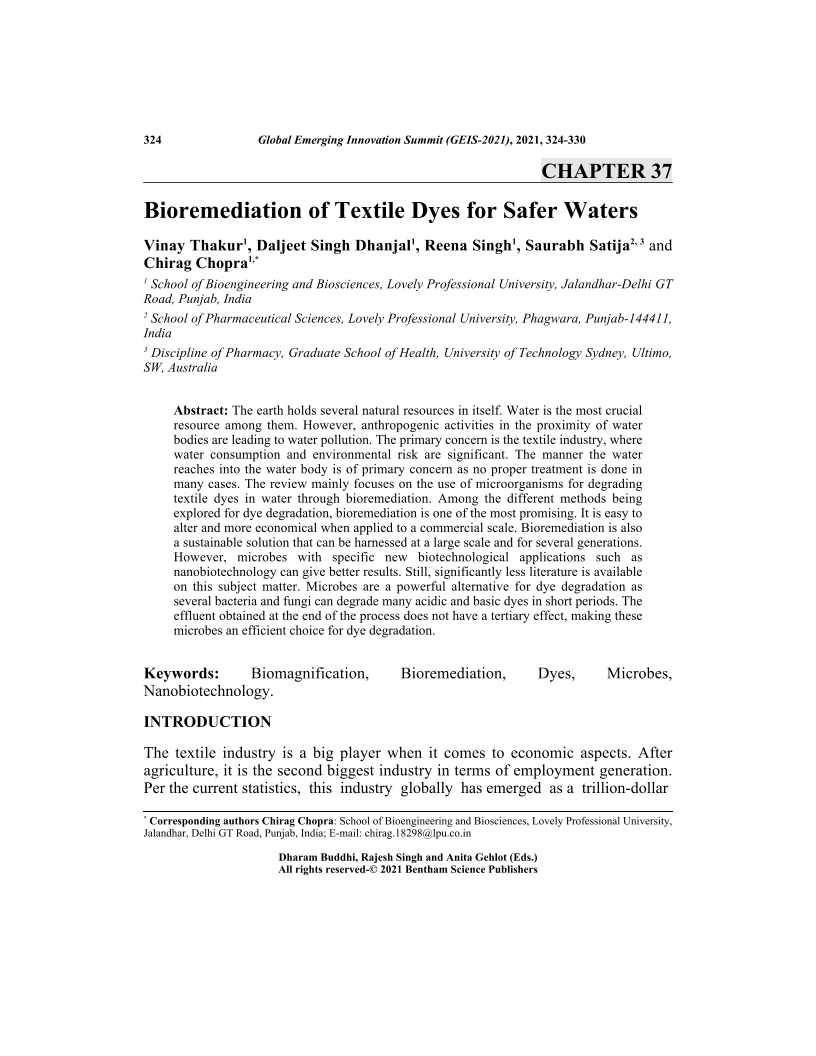oa Bioremediation of Textile Dyes for Safer Waters

- Authors: Vinay Thakur1, Daljeet Singh Dhanjal2, Reena Singh3, Saurabh Satija4, Chirag Chopra5
-
View Affiliations Hide AffiliationsAffiliations: 1 School of Bioengineering and Biosciences, Lovely Professional University, Jalandhar Delhi GT Road, Punjab, India 2 School of Bioengineering and Biosciences, Lovely Professional University, Jalandhar-Delhi GT Road, Punjab, India 3 School of Bioengineering and Biosciences, Lovely Professional University, Jalandhar-Delhi GT Road, Punjab, India 4 School of Pharmaceutical Sciences, Lovely Professional University, Phagwara, Punjab-144411, India 5 School of Bioengineering and Biosciences, Lovely Professional University, Jalandhar-Delhi GT Road, Punjab, India
- Source: Global Emerging Innovation Summit (GEIS-2021) , pp 324-330
- Publication Date: November 2021
- Language: English
Bioremediation of Textile Dyes for Safer Waters, Page 1 of 1
< Previous page | Next page > /docserver/preview/fulltext/9781681089010/chapter-37-1.gif
The earth holds several natural resources in itself. Water is the most crucial resource among them. However, anthropogenic activities in the proximity of water bodies are leading to water pollution. The primary concern is the textile industry, where water consumption and environmental risk are significant. The manner the water reaches into the water body is of primary concern as no proper treatment is done in many cases. The review mainly focuses on the use of microorganisms for degrading textile dyes in water through bioremediation. Among the different methods being explored for dye degradation, bioremediation is one of the most promising. It is easy to alter and more economical when applied to a commercial scale. Bioremediation is also a sustainable solution that can be harnessed at a large scale and for several generations. However, microbes with specific new biotechnological applications such as nanobiotechnology can give better results. Still, significantly less literature is available on this subject matter. Microbes are a powerful alternative for dye degradation as several bacteria and fungi can degrade many acidic and basic dyes in short periods. The effluent obtained at the end of the process does not have a tertiary effect, making these microbes an efficient choice for dye degradation.
-
From This Site
/content/books/9781681089010.chapter-37dcterms_subject,pub_keyword-contentType:Journal105

